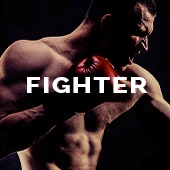If boxing is to place its future in anyone’s hands, it’s likely safest in the mighty fists of Teofimo Lopez and Vergil Ortiz Jr.
Both Lopez and Ortiz turned in dazzling performances over the weekend, two weeks before the year’s end, which had to give fans a lot of hope—and excitement—heading into 2020.
The 21-year old Ortiz kicked things off on Friday night at the Fantasy Springs Resort Casino in Indio, CA, stopping the slick boxing Brad Solomon in five rounds. In all, Ortiz dropped Solomon three times: once with a jab in the fourth round, another in the fifth with a rocket of a right hand, and then a fight-ending sequence of body blows. It was a scary display of both boxing prowess and physical strength. Not only was he able to simply jab his way through all of Solomon’s smooth movement and feints, but when Solomon did throw and even land punches, Ortiz was utterly unbothered by them. Against a fighter who has made his living winning fights by never allowing his opponents to get comfortable and figure him out, Ortiz was never puzzled or deterred for a second.
"I had to utilize my jab. Most importantly I had to figure out my range. He'd be leaning forward, leaning back, he can try to catch me with the counters. I just had to use my smarts in the ring," Ortiz told DAZN reporter Claudia Trejos after the fight. "I feel like I was very patient. I knew I had to pick it up somehow. I can't just lay low. But, I did a good job."
Lopez, just one year older than Ortiz at 22, captured his first world title by destroying IBF lightweight champion Richard Commey via second round TKO at Madison Square Garden in New York City. In the second round, Lopez landed the picture-perfect right hand. The one you land on the heavy bag or the focus mitts that makes the resounding pop. The one you see in the still photo of Rocky Marciano recalibrating Jersey Joe Walcott’s jaw and dream you could land. Lopez landed it on a legit, dangerous world champion, not a still target, and created his own picturesque moment. Somehow Commey survived, but then Lopez showed that the source of his power is his blinding speed, as he closed the show by landing 31 of 35 power punches with his opponent swaying on the ropes.
“I’m at a loss for words right now. This a dream come true. [Commey] is a bad man. His shot could’ve done the same to me if he hit me with that shot,” said Lopez.
Both Lopez and Ortiz have stylistic similarities, in that they are boxer punchers, with the emphasis on punchers. The two have different approaches to setting up those shots, but both have the specific objective of finding a way to land them as quickly as possible. This is part of what makes both fighters so appealing—no matter what style of boxing you’re drawn to, Lopez and Ortiz can be appreciated. Ortiz, honed in the Robert Garcia gym, has the tenacity and ferociousness of his close friend Jose Ramirez, and the calculative abilities of Mikey Garcia. Lopez, born in Brooklyn and of Honduran descent, has the swagger and rhythm of a New York slickster and the pop of a classic Central American banger.
Outside of the ring, both display endearing confidence in different ways. Lopez is the more traditional braggadocio, one who will tell you what he’s going to do before he does it—such as the Commey fight, which he forecasted would not go past six rounds. Ortiz has the kind of “aw shucks” humbleness and self-deprecation even in moments of triumph (he gave himself a “high B” for his knockout of Solomon) that can only manifest when you’re used to being sickeningly good at something.
At their age, barely old enough to buy a case of White Claw, Lopez and Ortiz’s rapid ascent has a chance to attract the attention of a demographic boxing sorely needs to connect to. According to the Sports Business Journal’s oft-cited study of televised sports’ viewership demographics, the median age of a boxing viewer in 2016 was 49. If the trends identified in that particular study have continued, that age could already be 50 or perhaps even higher, given how the world of streaming has exploded in the last three years.
Plenty of Millennials and Gen Zs don’t have cable for reasons spanning from lack of interest to affordability, but in 2019/2020, they can stream every major boxing platform affordably. In 2016, the top stars in boxing were still Floyd Mayweather, Manny Pacquiao and Wladimir Klitschko—near-40-year olds, the same fighters their siblings, and maybe even their parents watched and connected with. The emergence of fighters like Lopez and Ortiz, along with contemporaries like Devin Haney, Ryan Garcia and others, feels similar to the changing landscape of music. The faces of popular music today are young, driven by the streaming economy, and sonically and stylistically diverse, much like the rising stars in the boxing ring today.
Lopez will have his opportunity to top the charts, so to speak, when he faces Vasyl Lomachenko in a bout seemingly headed for April of next year. A win over a fighter many consider to be the best alive could be the co-sign that amplifies the wattage of his stardom to blinding levels. Ortiz, meanwhile, doesn’t yet have his Lomachenko to catapult him—in fact, he’s still waiting for his Richard Commey. He’ll no doubt be given the 2019 Prospect of the Year award, but it feels akin to winning Best New Artist at the Grammys when you’re already a star—Ortiz is a prospect in label only. In reality, he’s as ready as Lopez is.
And the boxing audience is ready for both of them on their screens as often as possible. It’s the other lightweights and welterweights of the world who might not be.

